Clancy Tucker's Blog, page 176
September 8, 2017
9 September 2017 - MOVING PICTURES

MOVING PICTURES
G'day folks,
Welcome to another set of moving pictures.


















Clancy's comment: I love the cow!
I'm ...


Published on September 08, 2017 17:07
September 7, 2017
8 September 2017 - THE BLACK DEATH
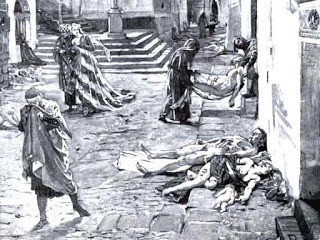
THE BLACK DEATH
G'day folks,
Welcome to an awful time in history.
The Black Death arrived in Europe by sea in October 1347 when 12 Genoese trading ships docked at the Sicilian port of Messina after a long journey through the Black Sea. The people who gathered on the docks to greet the ships were met with a horrifying surprise: Most of the sailors aboard the ships were dead, and those who were still alive were gravely ill. They were overcome with fever, unable to keep food down and delirious from pain. Strangest of all, they were covered in mysterious black boils that oozed blood and pus and gave their illness its name: the “Black Death.” The Sicilian authorities hastily ordered the fleet of “death ships” out of the harbor, but it was too late: Over the next five years, the mysterious Black Death would kill more than 20 million people in Europe–almost one-third of the continent’s population.
“The Black Death”
Even before the “death ships” pulled into port at Messina, many Europeans had heard rumors about a “Great Pestilence” that was carving a deadly path across the trade routes of the Near and Far East. (Early in the 1340s, the disease had struck China, India, Persia, Syria and Egypt.) However, they were scarcely equipped for the horrible reality of the Black Death. “In men and women alike,” the Italian poet Giovanni Boccaccio wrote, “at the beginning of the malady, certain swellings, either on the groin or under the armpits…waxed to the bigness of a common apple, others to the size of an egg, some more and some less, and these the vulgar named plague-boils.”
Blood and pus seeped out of these strange swellings, which were followed by a host of other unpleasant symptoms–fever, chills, vomiting, diarrhea, terrible aches and pains–and then, in short order, death. The Black Death was terrifyingly, indiscriminately contagious: “the mere touching of the clothes,” wrote Boccaccio, “appeared to itself to communicate the malady to the toucher.” The disease was also terrifyingly efficient. People who were perfectly healthy when they went to bed at night could be dead by morning.
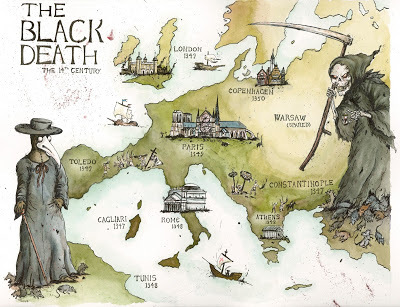
Did You Know?
Many scholars think that the nursery rhyme “Ring around the Rosy” was written about the symptoms of the Black Death.
Understanding the Black Death
Today, scientists understand that the Black Death, now known as the plague, is spread by a bacillus called Yersina pestis. (The French biologist Alexandre Yersin discovered this germ at the end of the 19th century.) They know that the bacillus travels from person to person pneumonically, or through the air, as well as through the bite of infected fleas and rats. Both of these pests could be found almost everywhere in medieval Europe, but they were particularly at home aboard ships of all kinds–which is how the deadly plague made its way through one European port city after another. Not long after it struck Messina, the Black Death spread to the port of Marseilles in France and the port of Tunis in North Africa. Then it reached Rome and Florence, two cities at the center of an elaborate web of trade routes. By the middle of 1348, the Black Death had struck Paris, Bordeaux, Lyon and London.

Today, this grim sequence of events is terrifying but comprehensible. In the middle of the 14th century, however, there seemed to be no rational explanation for it. No one knew exactly how the Black Death was transmitted from one patient to another–according to one doctor, for example, “instantaneous death occurs when the aerial spirit escaping from the eyes of the sick man strikes the healthy person standing near and looking at the sick”–and no one knew how to prevent or treat it. Physicians relied on crude and unsophisticated techniques such as bloodletting and boil-lancing (practices that were dangerous as well as unsanitary) and superstitious practices such as burning aromatic herbs and bathing in rosewater or vinegar.
Meanwhile, in a panic, healthy people did all they could to avoid the sick. Doctors refused to see patients; priests refused to administer last rites. Shopkeepers closed stores. Many people fled the cities for the countryside, but even there they could not escape the disease: It affected cows, sheep, goats, pigs and chickens as well as people. In fact, so many sheep died that one of the consequences of the Black Death was a European wool shortage. And many people, desperate to save themselves, even abandoned their sick and dying loved ones. “Thus doing,” Boccaccio wrote, “each thought to secure immunity for himself.”
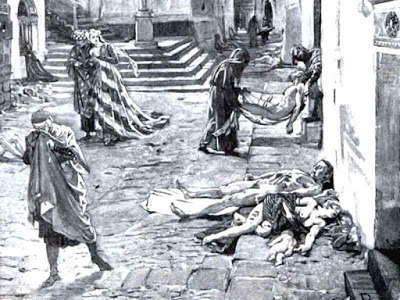
God’s Punishment?
Because they did not understand the biology of the disease, many people believed that the Black Death was a kind of divine punishment–retribution for sins against God such as greed, blasphemy, heresy, fornication and worldliness. By this logic, the only way to overcome the plague was to win God’s forgiveness. Some people believed that the way to do this was to purge their communities of heretics and other troublemakers–so, for example, many thousands of Jews were massacred in 1348 and 1349. (Thousands more fled to the sparsely populated regions of Eastern Europe, where they could be relatively safe from the rampaging mobs in the cities.)
Some people coped with the terror and uncertainty of the Black Death epidemic by lashing out at their neighbors; others coped by turning inward and fretting about the condition of their own souls. Some upper-class men joined processions of flagellants that traveled from town to town and engaged in public displays of penance and punishment: They would beat themselves and one another with heavy leather straps studded with sharp pieces of metal while the townspeople looked on. For 33 1/2 days, the flagellants repeated this ritual three times a day. Then they would move on to the next town and begin the process over again.

Though the flagellant movement did provide some comfort to people who felt powerless in the face of inexplicable tragedy, it soon began to worry the Pope, whose authority the flagellants had begun to usurp. In the face of this papal resistance, the movement disintegrated.
The Black Death epidemic had run its course by the early 1350s, but the plague reappeared every few generations for centuries. Modern sanitation and public-health practices have greatly mitigated the impact of the disease but have not eliminated it.

Clancy's comment: Yuk. Glad my relatives survived.
I'm ...


Published on September 07, 2017 14:56
September 6, 2017
7 September 2017 - THE TARGA FLORIO
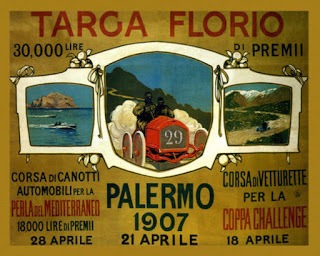
THE TARGA FLORIO
G'day folks,
I t was the kind of race where if a car broke down, the driver would have been invited inside by locals for spaghetti. The track, littered with horseshoe nails, meandered through the tiny twisting streets of quaint Sicilian mountain towns while villagers watched Ferraris speed by at 100 miles an hour, perilously close to their doorsteps.
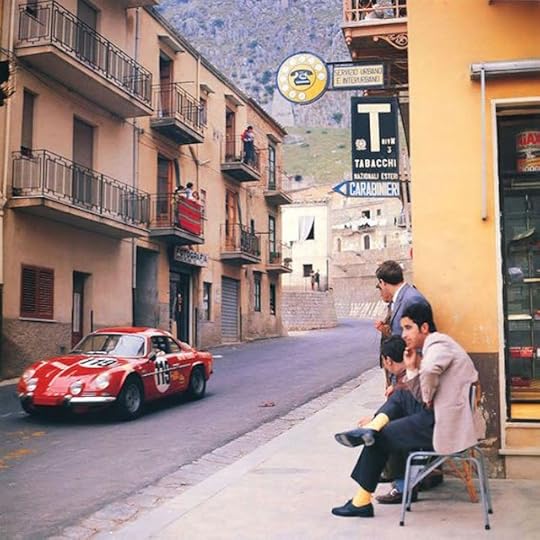
The Targo Florio embodied la Dolce Vita and brought international recognition to Sicily for seven decades, but it was its own dangerous beauty that would ultimately lead to its demise.

Founded in 1906, it was one of Europe’s most important and popular races when the Grand Prix tournaments that would succeed it were still just isolated events, not a series like today’s Formula 1.

A 21 year-old Enzo Ferrari drove his first race in 1919 on the Targa track, and in 1924, Mercedes selected one of their young engineers to compete in a car he had designed himself. The driver, who won the race that year, was Ferdinand Porsche.
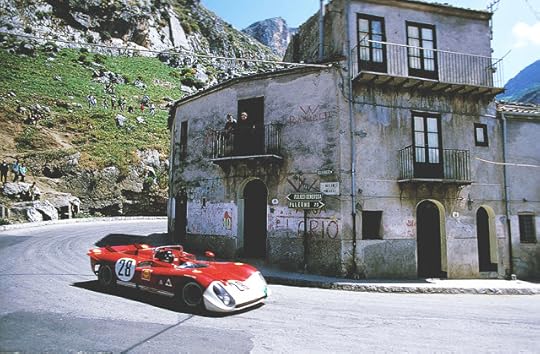
The Targa Florio track was the most difficult in the world and unlike any other driving experience. The original Grande 148 km circuit was a single lap of 2,000 corners, most within the ancient crumbling Sicilian villages.
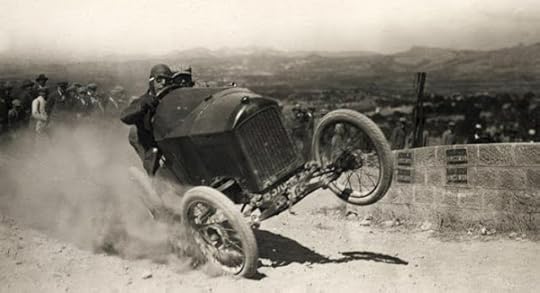
Drivers needed at least 60 laps to learn the course and practice days were held in public traffic with local cars going about their daily business, livestock by the roadside and children playing in the street.

Every year on race days, which were treated like a national holiday, villagers gathered in the streets, set up their furniture on the sidewalks or even on the roads, played cards and drank Martini, waiting to cheer on the racers as they whizzed by.

Nino Vaccarella, a native Sicilian from Palermo was their favourite driver, who rode in the most powerful car ever to participate in the race– a Ferrari, naturally. In 1962, he was about to win the race when he slowed his car to wave to fans and drove into a wall. His name can still be found written in graffiti along the lost Targa tracks.
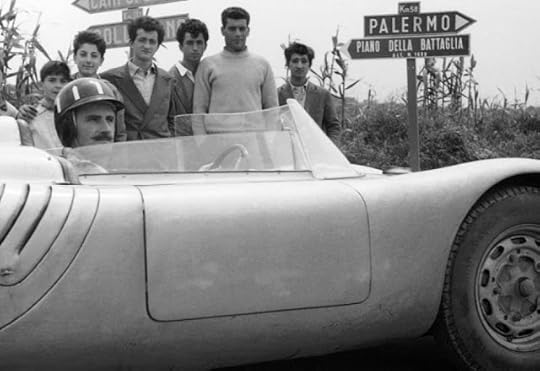 Graham Hill
Graham Hill Industry experts called the race that regularly chewed up now-priceless sports cars, “totally insane”– and it’s a miracle there were only nine fatalities in the event’s 71 year history. The race had a particularly bad year in 1973 with two fatal accidents and several disastrously close calls which caused the event to fall out of favour with the international racing community. The automative governing body began demanding all official international circuits have mandatory safety walls, but for Targa’s 44-mile track of combined public roads and tiny Sicilian streets, it was an impossible demand.

When a driver crashed into the crowd at 100 mph in 1977, killing two and putting himself into a coma, it was the final nail in the coffin for Targa. Police forcibly stopped the race on the 4th lap and no car would ever see the Targa Florio finish line again.
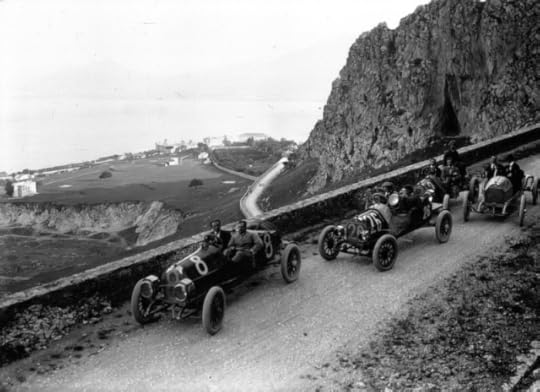


Clancy's comment: Ah, those were the days. By the way, Graham Hill, four times world champion, drove in this race. He first drove a car at 25 years-of-age - from one side of London to the other.
I'm ...


Published on September 06, 2017 14:43
September 5, 2017
6 September 2017 - TOP QUOTES

TOP QUOTES
G'day folks,
Welcome to some great quotes to fire you up.













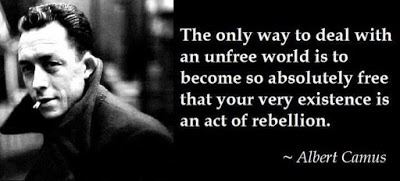
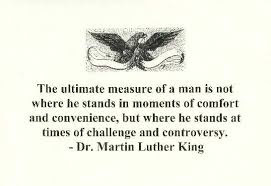

Clancy's comment: Inspiring?
I'm ....


Published on September 05, 2017 14:11
September 4, 2017
5 September 2017 - PRESIDENT RICHARD NIXON
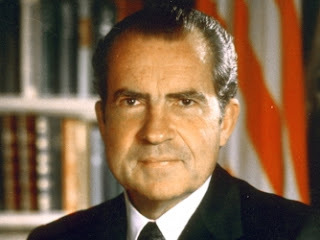
PRESIDENT RICHARD NIXON
G'day folks,
Welcome to some facts about a controversial President. Richard Milhous Nixon was the 37th President of the United States from 1969 until 1974, when he resigned from office, the only U.S. president to do so.
Richard Nixon (1913-94), the 37th U.S. president, is best remembered as the only president ever to resign from office. Nixon stepped down in 1974, halfway through his second term, rather than face impeachment over his efforts to cover up illegal activities by members of his administration in the Watergate scandal. A former Republican congressman and U.S. senator from California, he served two terms as vice president under Dwight Eisenhower (1890-1969) in the 1950s. In 1960, Nixon lost his bid for the presidency in a close race with Democrat John F. Kennedy (1917-63). He ran for the White House again in 1968 and won. As president, Nixon’s achievements included forging diplomatic ties with China and the Soviet Union, and withdrawing U.S. troops from an unpopular war in Vietnam. However, Nixon’s involvement in Watergate tarnished his legacy and deepened American cynicism about government.
Education and Early Political Career
Richard Milhous Nixon was born on January 9, 1913, in Yorba Linda, California.He was the second of five sons of Francis Anthony Nixon (1878-1956), who struggled to earn a living running a grocery store and gas station, and his wife, Hannah Milhous Nixon (1885-1967). Nixon absorbed his parents’ discontent with their working-class circumstances and developed a strong sense of ambition.
He attended Whittier College, where he excelled as a debater and was elected president of the student body before graduating in 1934. Three years later, he earned a law degree from Duke University, where he was head of the student bar association and graduated near the top of his class. After Duke, he returned to Whittier, California, and began working as an attorney. In 1940, Nixon married Thelma Catherine “Pat” Ryan (1912-93), whom he met while participating in a local theater group. The couple had two daughters, Patricia (1946-) and Julie (1948-).
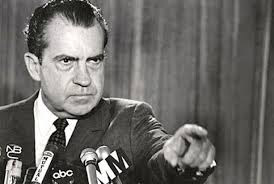
When America entered World War II (1939-45), Nixon joined the U.S. Navy and served as an operations officer in the Pacific.
Following the war, Nixon launched his political career in 1946 when he defeated a five-term Democratic incumbent to represent his California district in the U.S. House of Representatives. As a congressman, Nixon served on the House Un-American Activities Committee and rose to national prominence by leading a controversial investigation of Alger Hiss (1904-1996), a well-regarded former State Department official who was accused of spying for the Soviet Union in the late 1930s.
Nixon was re-elected to Congress in 1948 and two years later, in 1950, won a seat in the U.S. Senate.
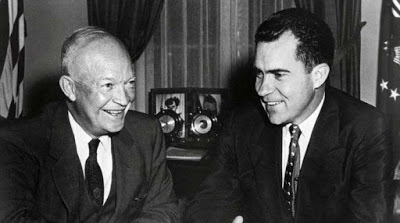
An Unsuccessful Bid for the Presidency Although Nixon’s attacks on alleged Communists and political opponents alarmed some people, they increased his popularity among conservative Republicans. In 1952, General Dwight Eisenhower selected the 39-year-old first-term senator to be his vice presidential running mate. A few months after accepting the nomination, Nixon became the target of a negative campaign that raised questions about money and gifts he allegedly received from industry lobbyists. Nixon answered these charges in his famous “Checkers” speech, claiming that the only gift he ever accepted was a puppy named Checkers for his young daughter. The speech proved effective and preserved Nixon’s spot on the ticket.
Eisenhower and Nixon won the election of 1952 and were re-elected in 1956. In 1960, Nixon claimed the Republican presidential nomination, but lost one of the closest elections in American history to U.S. Senator John F. Kennedy of Massachusetts. The turning point of the campaign came in the first-ever nationally televised presidential debate. During the broadcast, Nixon appeared pale, nervous and sweaty compared with his tan, well-rested and vigorous opponent.
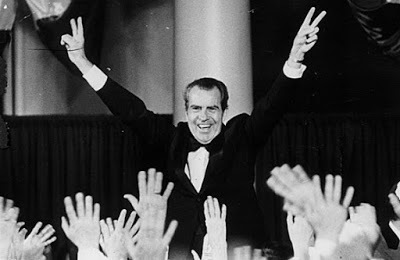
The loss to Kennedy dealt a terrible blow to Nixon’s ego. He claimed that the media disliked him and had slanted campaign coverage in favor of his handsome and wealthy opponent. Nixon returned home to California, where he practiced law and launched a campaign for governor in 1962. When he lost this election as well, many observers believed that his political career was over. As a disgusted Nixon told reporters, “You won’t have Nixon to kick around anymore.”
Winning the White House Six years after losing the governorship in his home state, Nixon made a remarkable political comeback and once again claimed his party’s presidential nomination. He prevailed in the 1968 U.S. presidential election, defeating Democrat Hubert Humphrey (1911-78) and third-party candidate George Wallace (1919-98). Nixon took office at a time of upheaval and change in the U.S. The American people were bitterly divided over the Vietnam War(1954-75), while women marched for equal rights and racial violence rocked the nation’s cities.
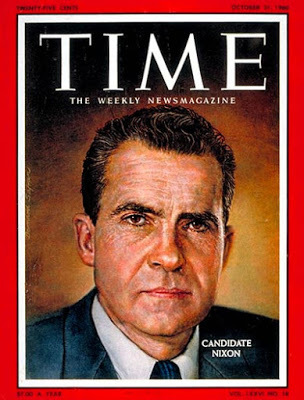
Declaring his intention to achieve “peace with honor” in Vietnam, Nixon introduced a strategy known as Vietnamization, which called for gradually withdrawing American troops from the war while training South Vietnamese army forces to take over their own defense. In January 1973, Nixon administration officials reached a peace agreement with Communist North Vietnam. The last American combat troops left Vietnam in March of that year. The hostilities continued, however, and in 1975 North Vietnam conquered South Vietnam and reunited the country under Communist rule.In addition to dealing with the Vietnam War, Nixon made historic visits, in 1972, to China and the Soviet Union. He reduced tensions between these Communist nations and the U.S., helping to set the stage for establishing formal diplomatic relations. Nixon also signed important treaties to limit the production of nuclear weapons.
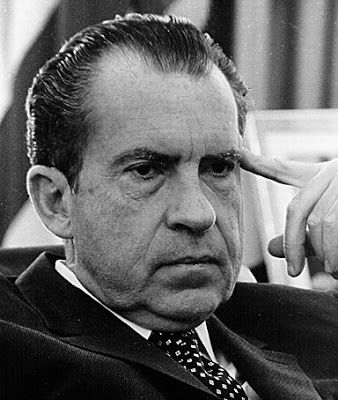
The Watergate Scandal and Beyond
While Nixon was running for re-election in 1972, operatives associated with his campaign broke into the headquarters of the Democratic National Committee at the Watergatecomplex in Washington, D.C. Several members of Nixon’s administration had knowledge of the burglary and while Nixon denied any involvement, secret tapes of White Houseconversations later revealed that the president had participated in efforts to cover up the criminal activity.
Facing impeachmentby Congress, Nixon resigned from office on August 9, 1974. He was replaced by Vice President Gerald Ford(1913-2006), who a month later pardoned Nixon for any wrongdoing. A number of administration officials were eventually convicted of crimes related to the Watergate affair.After leaving the White House, Nixon retired to California (he and his wife later moved to New Jersey) and quietly worked to rehabilitate his image, writing books, traveling extensively and consulting with Democratic and Republican presidents. By the time he died on April 22, 1994, at age 81 in New York City, after suffering a stroke, some people viewed him as a respected elder statesman. Other Americans, however, rejected efforts to paint him as anything but a disgraced criminal.

Clancy's comment: So often ego and ambition get in the way of achieving your dreams.
I'm ...


Published on September 04, 2017 14:59
September 3, 2017
4 September 2017 - NINA-MARIE BUTLER - Guest Blogger

NINA-MARIE BUTLER- Guest Blogger -
G'day folks,
Today, I welcome a blogger who has offered to write an article about her life in the workplace - as a disabled employee. Nina is an Australian living in Perth, Western Australia. Her ultimate ambition is to be living proof that you can’t judge a book by its cover. She hopes that in accepting herself and loving the life she lives others will too. Nina blogs about life and how she sees the world in a humorous and thought provoking way.
Welcome, Nina-Marie ....
While most children were nagging their parents to buy them colouring books, all I wanted was an invoice book. And I made good use of it too.
I was invoicing people for Friendship Bracelets (a.k.a. plaited pieces of wool) which they did not actually want, aprons and other hands-sewn items which I would then "volunteer" my Nonna to make. And custom-made cakes, which I did bake myself, but that came from a packet mix supplied by my mum.
I was very entrepreneurial and I loved doing paperwork so there was no doubt in my mind that when I grew up I was going to be a career woman

I wanted to be a teacher, a fashion designer, a journalist, a real estate agent, teacher again and an advertising executive.
In short, I thought I was going to rule the world.
When I did try to enter the workforce however, it was not as easy as I had imagined it was going to be. I had an awesome looking resume for someone so young (even if I do say so myself) so I pretty much got an interview for every job I applied for, but I never ever got the job itself.
No one actually sent it but I am sure it had something to do with the way I look. You see, until I open my mouth most people assume that my disability is intellectual as well as physical. It is not
In fact, at one interview I was not asked any questions at all. Instead, I was given an envelope and asked to copy an address onto it. Just to see if I could.

Eventually I did get a job (all be it with the help of a disability job recruitment agency), and I am very proud to say that 13 years later I am still with the same (private sector) organisation.
Occasionally people tell me how lucky I am to have been given a job. I do take exception to this because it always seems to imply that I do not deserve to be there. I assure you, I do.
I can honestly say that the job I am doing now is the best job I have ever had. , Partly because I can use my writing skills, I get to do a lot of content editing and write articles, (almost like a real journalist) but mostly because of the team I work with. They trust me to do a good job and I have not had to fight for it
It took a while for me to get here though.

I had to fight off the "helpful" colleagues who kept trying to fix problems that did not actually exist, and put up with colleagues who saw me as a disability and not as a person, so thought it was okay to hug me every five minutes or pat me on the head when I did something well. I also had to prove myself to those who did not believe I could do the job.
At times, it was hard and often it was frustrating. However, I got through it and have been able to further my career in many different roles within the organisation since then. At one point, I even had two directors fighting over me.
I have always said that my goal in life is to be living proof that you cannot judge a book by its cover.
Not long ago my manager did tell me that I came very highly recommended.
It has taken me awhile, but I think I am getting there.

NINA-MARIE'S BLOG

Clancy's comment: Thanks, Nina-Marie. You have a great style and attitude. Keep rocking. Love ya work!
I'm ...


Published on September 03, 2017 14:33
September 2, 2017
3 September 2017 - THE FIRST CRUISE SHIP
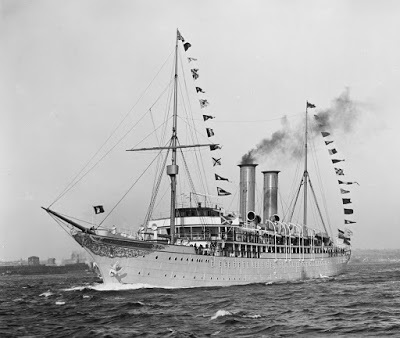
THE FIRST CRUISE SHIP
G'day folks,
Welcome to some facts on what is reputed to be the world's first cruise ship.
Launched in 1900, let’s take a cruise through history aboard the SS Prinzessin Victoria Luise, credited with having been the first purpose-built cruise ship, a German passenger ship of the Hamburg-America Line.
It only spent six years in service before it was accidentally grounded off the coast of Jamaica (oops), but boy was she a beauty. Designed to look more like a private yacht than any of her commercial counterparts, she was pureluxury. We’re talking first-class cabins only (120 of them), interior design approved by the German emperor himself and amenities including a library, a gymnasium, and even a darkroom for the development of film by amateur photographers.
It was such a beautiful ship that it actually made the Kaiser jealous that it was slightly better than his royal yacht.

Pushing at a steady 15 knots (28 km/h), she might not have chugged along quite as quickly as the Titanic (probably for the best), but for a passenger-only ship, the SS Prinzessin Victoria Luise was a totally revolutionary vessel. She had been purposely built as the world’s cruise ship, a novel idea that came about following an experiment by German shipping magnate, Albert Ballin.
In 1988, he noticed that one of his company’s largest flagship ocean liners, the SS Augusta Victoria was doing a lot of sitting around in port being quite useless for most of the winter season, simply because travellers preferred to make the North Atlantic journey in warmer climates.

So against everyone’s advice, he decided to send the Augusta Victoria on a 58-day “pleasure voyage” from Germany through the Mediterranean to the Orient. The cruise included well-planned excursions ashore and ports-of-call along the route. The voyage was a huge success and introduced the concept of the “floating hotel”.
Here are a few more photographs:
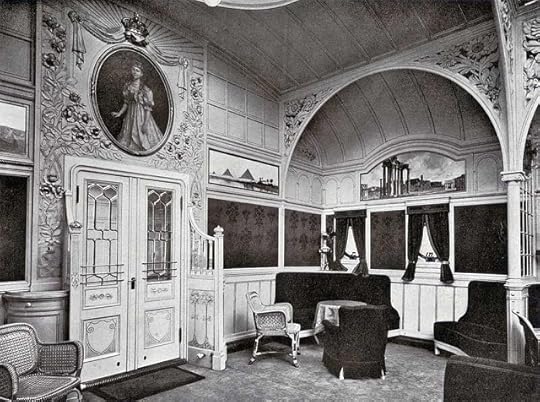

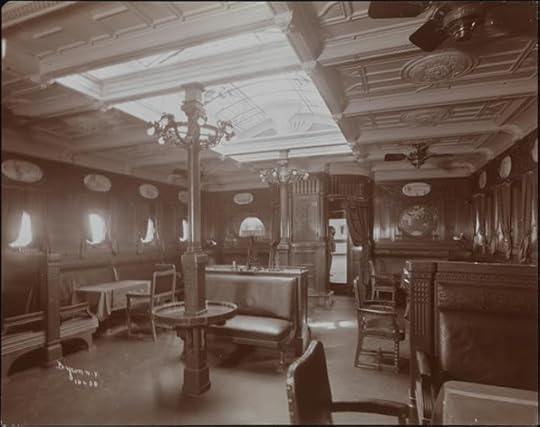



Clancy's comment: Wow, they had such style and grace in those days.
I'm ....


Published on September 02, 2017 15:36
September 1, 2017
2 September 2017 - FACTS ABOUT PRETZELS

FACTS ABOUT PRETZELS
G'day folks,
Welcome to some background notes on a snack that is very popular in the USA.
Though the exact origins of the pretzel remain mysterious, legend has it that the story began around A.D. 610, when Italian monks presented their young students with treats of baked dough twisted in the shape of crossed arms. At the time, crossing one’s arms was the traditional posture for prayer. As the custom spread through medieval Europe, the pretzel’s three holes came to represent the Holy Trinity—Father, Son and Holy Spirit—and the twisty baked good became associated with good luck, long life and prosperity.
The Catholic Church played a leading role in the early history of the pretzel. In the seventh century, the church dictated stricter rules governing fasting and abstinence during Lent than it does today. Pretzels, made of a simple mixture of water, flour and salt, were an ideal food to consume during Lent, when all types of meat, dairy and eggs were prohibited.
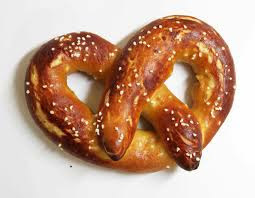
The first pretzels were baked as a soft, squishy bread, like the soft pretzels of today. Some say they were originally called “bracellae,” the Latin term for “little arms,” from which Germans later derived the word “bretzel.” According to others, the earliest pretzels were dubbed “pretiolas,” meaning “little rewards,” and handed out by the monks when their young pupils recited their prayers correctly.
Whatever they may have been called, the popularity of these twisty treats spread across Europe during the Middle Ages. Seen as a symbol of good luck, prosperity and spiritual fulfillment, pretzels were also commonly distributed to the poor, as a way of providing them with both spiritual and literal sustenance.
Pretzels—or those who made them—took a particularly dramatic turn in the spotlight in 1510, when Ottoman Turks attempted to invade Vienna, Austria, by digging tunnels underneath the city’s walls. Monks baking pretzels in the basement of a monastery heard the enemy’s progress and alerted the rest of the city, then helped defeat the Turkish attack. As a reward, the Austrian emperor gave the pretzel bakers their own coat of arms.
By the 17th century, the interlocking loops of the pretzel had come to symbolize undying love as well. Pretzel legend has it that in 1614 in Switzerland, royal couples used a pretzel in their wedding ceremonies (similar to how a wishbone might be used today) to seal the bond of matrimony, and that this custom may have been the origin of the phrase “tying the knot.” In Germany—the country and people most associated with the pretzel throughout history—17th-century children wore pretzel necklaces on New Year’s to symbolize good luck and prosperity for the coming year.

When did pretzels make their way to America? One rumor has it that the doughy knots came over on the Mayflower, and were used by the Pilgrims for trade with the Native Americans they met in the New World.
German immigrants certainly brought pretzels with them when they began settling in Pennsylvania around 1710. In 1861, Julius Sturgis founded the first commercial pretzel bakery in the town of Lititz in Lancaster County, Pennsylvania.
Sturgis also claimed credit for developing the first hard pretzels—or at least, for being the first to intentionally bake hard pretzels (rather than leave the soft ones in the oven too long by accident). The crispy snacks lasted longer in an airtight container, allowing them to be sold further away from the bakery itself and to stay on shelves longer. Eventually, hard pretzels would come to be arguably even more popular than their soft counterparts.
Until the 1930s, pretzels were still manufactured by hand. But in 1935, the Reading Pretzel Machinery Company introduced the first automated pretzel maker, which enabled bakers to put out some 245 pretzels per minute, compared with the 40 per minute an individual worker could make by hand. Today, Pennsylvania remains the American pretzel-making capital, as a full 80 percent of U.S.-made pretzels come from the Keystone State.

Clancy's comment: Ah ... I've had many pretzels and beer.
I'm ...


Published on September 01, 2017 14:57
August 31, 2017
1 September 2017 - NEW YORK BAR MURALS
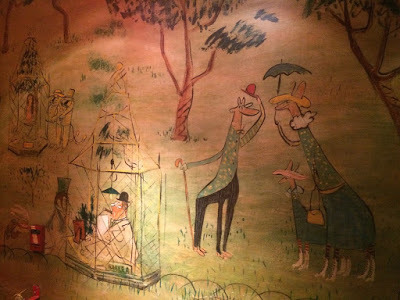
NEW YORK BAR MURALS
G'day folks,
Ever been to a bar in New York? I've been to a few. They are cozy places to chat and drink, but many are beautifully decorated.
A fter a hard day’s toil, one of New York’s greatest pleasures is to unwind with an evening cocktail. But amidst the countless bars to be found in the city, there are some where you can enjoy your favourite drink against a beautiful back drop. For dotted around the Metropolis are bars decorated with large scale and remarkable hand painted murals.
From the grand old hotels of Fifth Avenue, to the sprawling denizens of the East Village, these works of art provide a charming backdrop of refined elegance. They can be found in some of the city’s most historic bars. Often whimsical, cartoonish and playful in character, they hark back to the elegant days of old New York City, when the people dressed as well as the cocktails that were made.
Check out these examples.

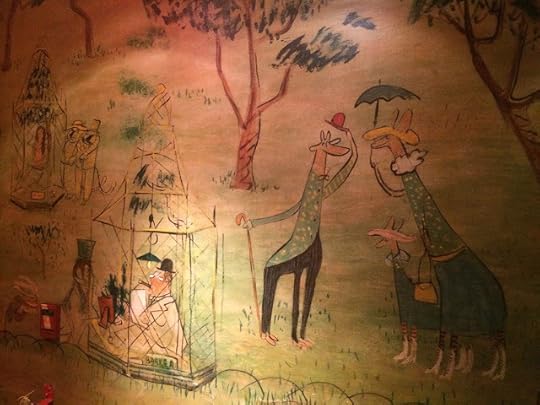




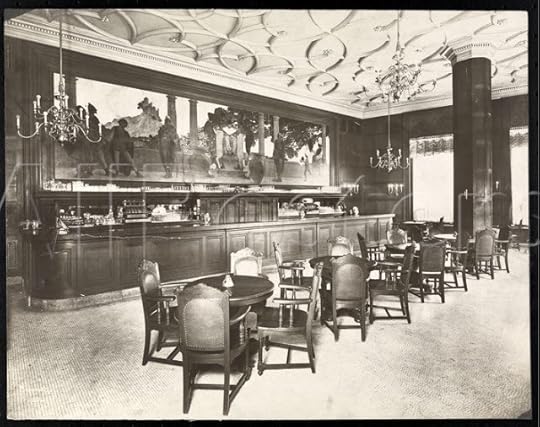
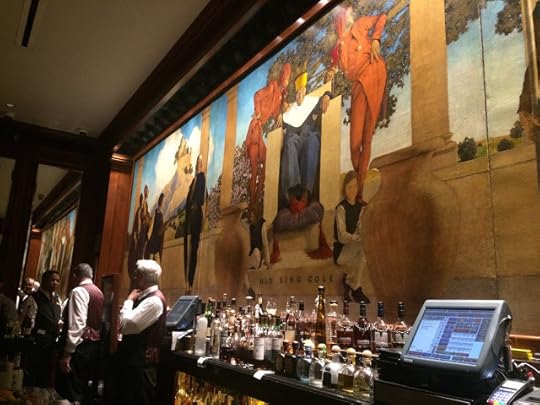

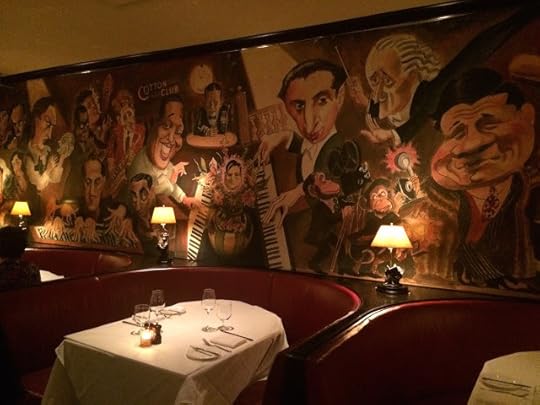
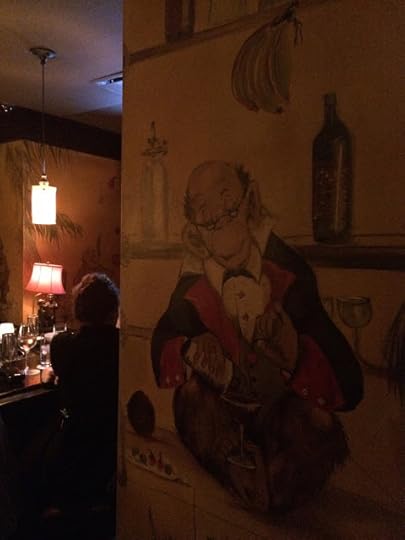


Clancy's comment: They all look cozy, eh?
I'm ...


Published on August 31, 2017 14:32
August 30, 2017
31 August 2017 - BLACK AND WHITE PHOTOGRAPHY
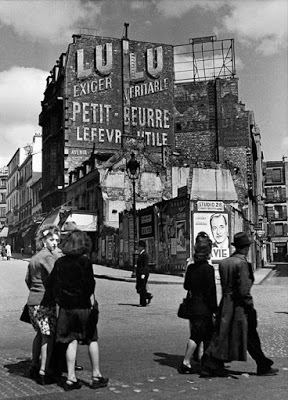
BLACK AND WHITEPHOTOGRAPHY
G'day folks,
Here are some more superb photographs from a bygone era. Check out the fashion.




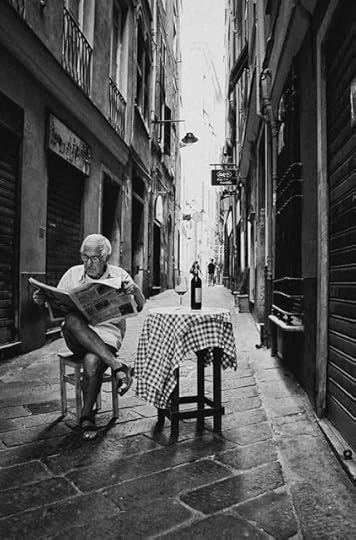
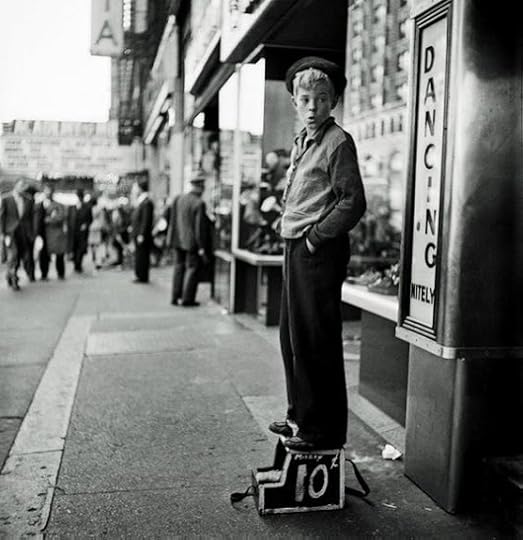






Clancy's comment: Some are from Warsaw, China, Naples, New York and Paris. Brilliant.
I'm ...


Published on August 30, 2017 14:47



